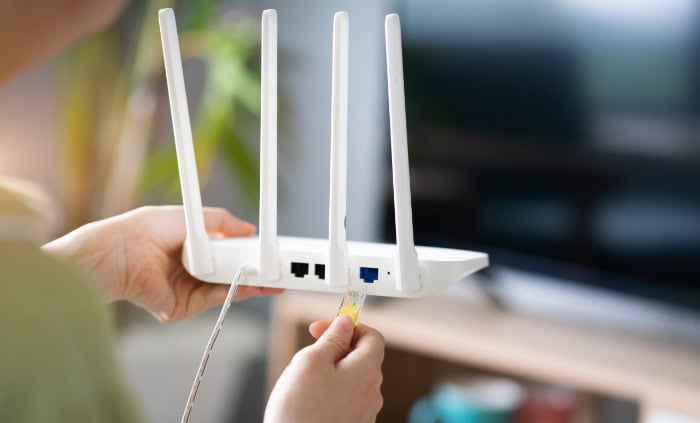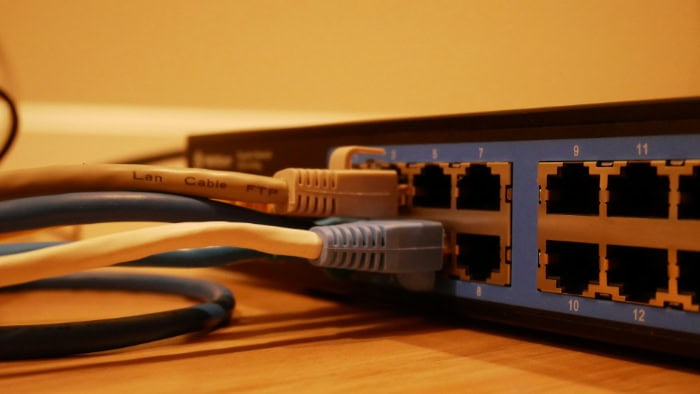LAN vs. WAN: Making the Right Choice for Your Network

Connections power everything, from sending a quick message across the office to sharing data between continents. Local Area Networks (LANs) and Wide Area Networks (WANs) are two essential building blocks that make modern life more connected and productive.
Grasping how these network types function and differ is crucial for making smart choices in personal setups, educational projects, or business environments. LANs bring speed and simplicity to homes and offices, while WANs enable collaboration and access across vast distances.
Definitions and Scope
A clear grasp of LAN and WAN begins with their fundamental scope and how they are typically managed. Both serve the same overarching goal of connecting devices for communication and data sharing, but they do so on distinctly different scales with unique challenges and benefits.
The scope and management style of each network type directly influence their complexity and the situations in which they excel.
Geographical Coverage
LAN, which stands for Local Area Network, is designed for relatively small, confined areas. Typical environments include single buildings, such as homes, classrooms, or office floors.
Its reach rarely extends beyond a single physical location; devices connected to a LAN are usually found within a few hundred meters of each other. This localized focus allows LANs to provide fast communication and straightforward troubleshooting.
On the other hand, WAN, or Wide Area Network, operates across much wider distances. WANs connect devices and networks over cities, regions, or even globally.
A WAN might link multiple offices in different countries, allowing employees to access shared resources from almost anywhere. The extended reach of a WAN comes with the challenge of ensuring reliable connections over potentially thousands of kilometers, introducing factors like signal delay and the need for robust infrastructure.
Ownership Models
LANs are most often privately owned and maintained. Control remains firmly in the hands of those who manage the space.
For example, an office IT team or a homeowner oversees the LAN’s setup, security, and ongoing maintenance. This level of direct oversight makes it easier to customize configurations and security settings to suit specific needs.
WANs, due to their wide reach, generally depend on external providers for portions of the network infrastructure. Telecommunications companies, Internet Service Providers, and sometimes government networks play vital roles by supplying leased lines, fiber optics, or satellite links.
Organizations using WANs must coordinate with these external entities for setup, troubleshooting, and upgrades. As a result, WAN management often involves partnership and negotiation rather than sole ownership.
Key Characteristics
Simplicity defines the typical LAN setup. Fewer devices, straightforward cabling or wireless connections, and centralized control mean that installation and management are relatively easy.
Network changes can be made quickly, with minimal disruption.
In contrast, WAN infrastructure is inherently more complex. The need to bridge great distances introduces elements like data routing, signal conversion, and multiple layers of security.
WANs often incorporate a blend of technologies, including leased communication lines, virtual private networks, and sometimes satellite links, all operating in unison. Ensuring efficient performance across such a broad infrastructure often requires greater expertise, extensive planning, and a well-coordinated approach.
Technical Infrastructure and Performance

The technical side of networks determines how smoothly information moves, how quickly devices communicate, and what kind of user experience people can expect. LANs and WANs have different structures and technologies at their core, which leads to noticeable differences in speed, data transfer, and the equipment they use.
Speed and Latency
High-speed connections define most LAN environments. Ethernet, one of the most common LAN technologies, often supports speeds of 1 Gbps or higher, delivering near-instant data transfer between devices on the same local network.
As a result, activities such as file sharing, online gaming, or high-definition video streaming run smoothly and face minimal delay. Latency, which describes the time it takes for data to travel from one device to another, is typically extremely low in a LAN setting.
Devices in close physical proximity benefit from the rapid exchange of information, keeping communication responsive.
WANs, in comparison, must account for delays due to the vast distances data must travel. Even with modern technology, signals sent across cities, countries, or continents face more obstacles and routing steps.
Bandwidth may be shared across many users, and data might pass through several network nodes before reaching its destination. As a result, WANs often deliver lower speeds and higher latency.
Cloud-based applications, large file transfers, and international communications may feel less immediate compared to operations on a local network.
Data Transfer Rates
Data transfer rates highlight how efficiently a network can move information. LANs shine in this area, regularly achieving gigabit-per-second speeds, which is enough for multiple users to access large files, stream video, and back up data simultaneously without bottlenecks.
The local scope of a LAN keeps the infrastructure simple and optimized for high performance. Users see consistent, reliable transfer speeds because data does not have to travel far or compete with non-local traffic.
WANs, on the other hand, face a more challenging environment. Data must cross many different infrastructures, possibly involving internet service provider networks, undersea cables, or satellite links.
Bandwidth is often limited, especially for remote offices or distributed teams relying on public networks. Fluctuations are common during peak usage hours or when additional traffic loads the network.
Although modern WAN solutions strive to boost performance, file transfers and cloud access can still be noticeably slower than on a LAN, especially over great distances.
Transmission Media
The type of cabling or wireless technology behind each network plays a central role in its capabilities. LANs commonly use Ethernet cables or Wi-Fi routers.
Ethernet provides reliable, high-speed connections with low interference, while Wi-Fi brings flexibility and easy relocation for connected devices. Both options are relatively affordable to install and simple to maintain.
WANs require more robust and varied transmission media. Companies often rent or lease dedicated lines such as fiber-optic cables to ensure dependable data paths across cities or countries.
In remote or hard-to-reach locations, satellite connections help bridge the gap, although these can introduce additional delays due to the distance signals must travel into space and back. The complexity and variety of media used in WANs contribute to their higher cost and the specialized skills needed to manage them.
Cost Implications and Maintenance
Evaluating the financial and practical requirements of network deployment is essential for making value-driven choices. The costs associated with LANs and WANs, both at the start and over time, can vary dramatically.
Setup, ongoing expenses, and the ability to scale all play a role in how organizations and individuals plan for current needs and future growth.
Setup Costs
LANs present a relatively budget-friendly solution for connecting computers and devices within a limited area. The majority of expenses go toward purchasing network switches, Ethernet cables, wireless access points, and possibly a network-attached storage device or printer.
Installation is straightforward, often managed by an in-house IT team or even someone with basic technical skills. The compact scale of LANs means hardware needs are modest, keeping total setup costs low compared to broader network solutions.
WANs involve more extensive investments to achieve connectivity across larger distances. Organizations may need to secure leased lines, enterprise-grade firewalls, or cloud-based network services.
Specialized hardware, such as routers designed for inter-city or international traffic, adds to the initial financial outlay. Costs often include not just equipment, but also installation fees charged by third-party providers and any necessary infrastructure upgrades.
Meeting the demands of a WAN almost always requires a bigger budget upfront as compared to a simple LAN setup.
Ongoing Expenses
Maintaining a LAN is usually manageable and predictable. Routine tasks might include monitoring network performance, troubleshooting occasional issues, and updating firmware on hardware.
Because ownership and management remain local, there are no recurring fees owed to outside parties. Replacement parts, if needed, are typically affordable and easy to source.
WANs, conversely, generate higher ongoing costs. Most organizations pay monthly or annual subscription fees to providers for leased lines, VPN access, and bandwidth allocation.
Managing a wide-area network often involves sophisticated monitoring tools and professional support services to troubleshoot issues or perform upgrades. As locations, user counts, or data volumes grow, ongoing expenses can rise quickly, making budgeting an ongoing consideration for organizations dependent on WAN infrastructure.
Scalability
Scalability refers to how easily a network can adapt to changing needs. For a LAN, expanding usually means purchasing a few more switches or access points and stretching cables to additional rooms.
Growth is simple as long as it remains within a single building or small campus, but rapidly becomes less practical if the network must reach distant locations.
WANs excel in their ability to support geographically dispersed expansion. New sites, remote offices, or cloud-based resources can be integrated into a WAN, often without the need for major on-premises hardware changes at the original location.
However, this flexibility involves greater expense. Upgrading bandwidth, deploying new secure connections, and adjusting provider agreements add complexity and cost as the network evolves.
Security and Reliability Considerations

Network security and reliability are top priorities for anyone responsible for managing or using shared digital resources. The differences between LAN and WAN in these areas often reflect their physical reach, control mechanisms, and exposure to outside influences.
Security Measures
LANs offer a significant advantage when it comes to security thanks to their limited scope and physical boundaries. Access can be tightly controlled, usually restricted to authorized users and devices within a single building or office.
Physical security, such as locked doors and restricted entry to networking closets, adds an extra barrier. Most security threats to LANs stem from within the network itself, where a trusted user or compromised device could cause harm.
WANs operate over much larger and less controllable areas. Data travels across public networks, the internet, or infrastructure managed by outside organizations.
Privacy and protection depend on advanced security measures such as data encryption, firewalls, and secure Virtual Private Networks (VPNs). Without encryption and strong authentication, sensitive information could be intercepted or altered during transmission.
Organizations must dedicate significant resources to continually monitor, update, and adapt their WAN security strategies to protect against a wider range of external threats.
Fault Tolerance
Reliability in a LAN is often high due to its localized nature. Short cabling runs, minimal interference, and fewer connection points mean that network faults are usually easy to find and fix.
Even if minor technical issues arise, in-house IT staff can often restore service quickly. Power outages, hardware failures, or misconfigurations tend to be contained, limiting the impact on day-to-day operations.
The distributed structure of WANs makes them more vulnerable to disruptions occurring far beyond a local site. Problems such as infrastructure failures, natural disasters, or service interruptions at a provider’s level can directly impact WAN reliability.
Restoring service may require coordination with multiple partners or even international support teams. To improve fault tolerance, organizations invest in redundant connections, backup sites, and sophisticated routing protocols, yet complete immunity from outages remains challenging.
Risk Factors
LANs, while easier to protect in many ways, are not entirely immune to risk. Internal breaches, whether intentional or accidental, pose the primary threat.
A single infected device or malicious insider can disrupt operations or compromise sensitive data. Regular audits, sound access control, and staff training are essential for keeping these risks at bay.
WANs face greater exposure to the outside world; data often passes through routers, networks, and systems not directly controlled by the organization. Cyberattacks, eavesdropping, and malicious network traffic become more significant concerns as information travels over public and semi-public pathways.
Security policies for WANs must address threats originating anywhere along the transmission route, making ongoing vigilance and adaptive measures essential parts of everyday network management.
Practical Applications and Decision-Making

Choosing the right network type can have a profound impact on how people collaborate, share resources, and pursue organizational goals. LANs and WANs each offer clear benefits, but the best option depends on the scenario, the way teams operate, and the scope of business ambitions.
Use Case Scenarios
Specific network roles become more apparent when considering how businesses and organizations operate. In small companies or startups with all employees located in a single office, a LAN delivers fast and straightforward file sharing.
Documents, printers, and devices can be accessed without worrying about external connections or complex security measures.
Cloud services, on the other hand, require WAN connectivity. Even a small business that stores files or applications online will need a reliable WAN to access those resources.
As soon as a business expands its reach beyond a single building, WANs become essential.
Remote teams, now a common facet of modern work culture, rely heavily on WANs for daily operations. Employees scattered across cities, states, or continents can connect securely to headquarters or each other through VPNs, maintaining productivity and security regardless of location.
Large or global enterprises depend on WANs to synchronize data, coordinate projects, and operate seamlessly across borders. Cross-border data sync, centralized databases, and shared applications all depend on WANs to function reliably at scale.
A simple table highlighting these scenarios can offer clarity:
| Scenario | LAN Use | WAN Use |
| Small businesses | File sharing | Cloud access |
| Remote teams | N/A | VPN connectivity |
| Global enterprises | N/A | Cross-border data sync |
Decision Factors
Selecting between LAN and WAN starts with a close look at geographic requirements. If all users and resources are in one location, a LAN is often the simplest and most cost-effective option.
As distance grows, WANs become increasingly necessary to link multiple sites, connect remote employees, or provide access to cloud-based resources.
Performance goals should also shape decisions. LANs offer higher data speeds and lower latency, making them ideal for tasks that require rapid response, such as file sharing or local backups.
WANs, while more versatile in reach, may experience slower speeds due to the distances and infrastructure involved, which can impact time-sensitive applications unless carefully engineered.
Budget remains a central concern. LAN installation and expansion are relatively inexpensive, particularly for limited or contained environments.
WANs introduce more significant costs due to leased lines, equipment, provider contracts, and maintenance, especially as the need for reliability and global access increases.
Conclusion
LANs and WANs serve as the backbone for today’s interconnected environments, but they do so in fundamentally different ways. LANs excel within confined spaces like homes or office buildings, delivering rapid speeds, easy management, and cost-effective setup.
Their simplicity and localized control make them ideally suited for workgroups, resource sharing, and situations that demand fast, reliable connections where all users are nearby.
WANs, by contrast, extend a network’s reach across cities, countries, or even continents. They support cloud access, connect remote teams, and enable global enterprises to function as unified organizations.
This expanded scope comes with greater technical complexity, higher costs, and a heightened need for advanced security measures to protect data as it traverses public and third-party infrastructures.
Selecting between LAN and WAN hinges on the network’s intended scale, the performance required, and available resources. A clear grasp of their distinct advantages and limitations allows organizations and individuals to design networks that fit both current and future needs, ensuring smooth operations, efficiency, and security in any setting.

